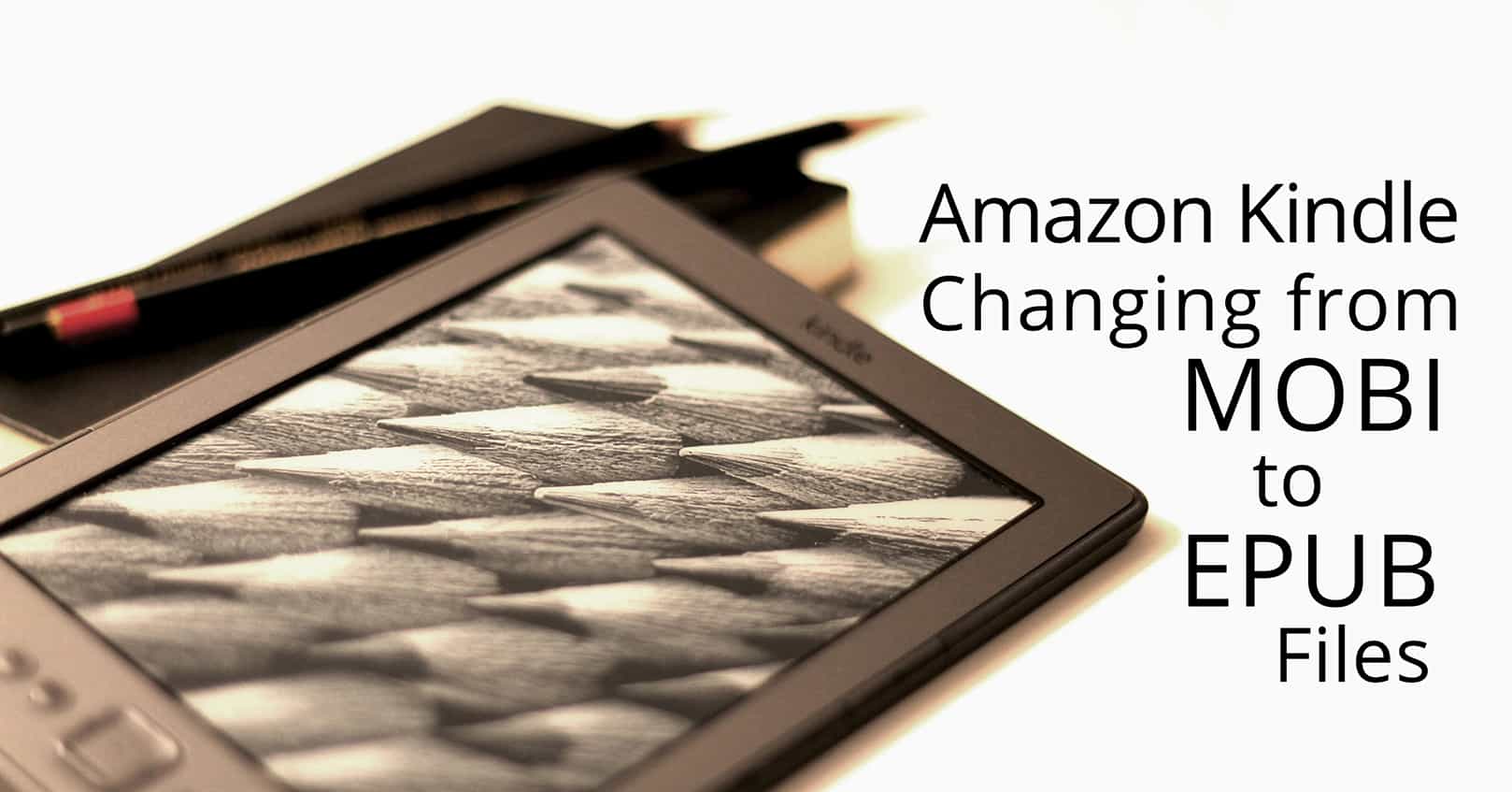
Amazon has long been the odd man out in the world of ebook files for their requirement of MOBI files. All other platforms use EPUB. But yesterday, Amazon sent out emails to authors to let them know that they have finally listened: to simplify the uploading process, they will begin using EPUB files on June 28, 2021. You won’t have to worry about changing your existing files, unless you upload a new version, but for all new books and any updates, you’ll want to make sure you have an EPUB handy.
What This Means for Authors
If your books are wide, this will mean less work for you, but if your books are solely on Amazon, you’ll have to change up the way you create your file. But doing so is usually as easy as changing a setting in your ebook creation software. There will likely be a short learning period, but we think this is a good direction for everyone.
Authors who have picture books and other fixed format MOBI files will still be able to continue using and creating MOBI files. This is good news because MOBI does create a better fixed format book than the older EPUB files accepted by some retailers. (Once all retailers update to the newest EPUB format, this shouldn’t be an issue, because newer EPUB file are capable of beautiful fixed format books.)
Amazon is also still accepting KPF (Kindle Create files) and DOC/DOCX (Microsoft Word files), along with other non recommended formats (HTML, RTF, TXT, and PDF). Note: we recommend creating your ebook with EPUB or KPF so you have more control over the final product, rather than uploading one of these other file formats.
What Happens on the Kindle Side
Even though Amazon is now accepting EPUB files instead of MOBI files from authors, Amazon will still be delivering MOBI files to Kindles. This means that the EPUB file will be converted by Amazon on the backend into a MOBI file. Because of this conversion, it’s important to double-check your ebook in Kindle Previewer 3 to be sure everything looks correct after it is converted.
How Does This Affect Subscriber Magnets?
Another implication of this is that although you, the author, may be uploading an EPUB to Amazon, if you want to offer a book on a separate website, such as for a subscriber magnet, you’ll still need to provide the MOBI file to readers, so they can sideload it onto their Kindle. So this change may end up making offering subscriber magnets a bit more work (although if your book is only on Amazon, it likely is in KDP Select, which means you can’t offer it as a subscriber magnet anyway, unless it’s only a sample), but perhaps future Kindles will change to using the EPUB format. Time will tell!
Let us know if you have any questions in the comments below.
















I uploaded an EPUB into KDP. It looks good on the Kindle Previewer 3. The EPUB is perfect with .2 paragraph indents and another .2 indents for block quotes for Bible verses.
I then converted the EPUB in Calibre to Mobi & downloaded it onto my Kindle as a final check.
The Mobi has the paragraphs indenting .5 (? – which is fine) EXCEPT my block quotes are way over to the right of the screen.
I think the Mobi is how they will look when people download my book to their Kindle? It looks bad. Do you know how to fix this?
This is great info! Thanks! You mentioned having to export slightly different for the ePub file for Amazon. Could you give me more info on this? I’m working in inDesign and it exports great for ePub but when I view it in Kindle Preview, some of the formatting gets wonky. Maybe it’s just an export setting you are referring to above… fingers crossed!
The different export for Amazon is now only for fixed format ebooks. So if you have a fixed format ebook, then you would want a MOBI file to upload to Amazon rather than an ePub. To get that MOBI file, you can convert the EPUB (make sure to export it as a fixed format EPUB to begin with) to a MOBI file before uploading to Amazon, or you can try Amazon’s plugin for InDesign that allows you to export directly to MOBI: https://www.amazon.com/gp/feature.html?ie=UTF8&docId=1000765271 (Full disclosure, I haven’t tried this and it may not still be supported!)
If your book isn’t fixed format (reflowable), then there may just be leftover formatting in your InDesign file that you need to clean up, stuff that only shows up when Amazon is converting the EPUB to a MOBI file on their backend (because you said the EPUB looks great). If you can’t get it quite right by changing the InDesign file, you can also directly edit the EPUB file with Calibre to see exactly what the issue is in the HTML and clean it up.
Does this mean I can use the same ePub ISBN for Amazon ebooks now? Instead of buying one for MOBi & one for EPUB?
An ISBN is used to differentiate between the versions of a book, so if the file you’re uploading to Amazon has the same text, images, and effects as the file you upload to another platform, then you can use one ISBN (and this was true even before Amazon started accepting EPUB instead of MOBI). So yes, just use one ISBN!
However, if, for example, you were creating an enhanced edition of your ebook, like you can in iBooks Author (adding audio, images, or special effects), then you would want to get a new ISBN for that version of your book.
Great info, nicely put together. Thank you SO much!!!
Thank you for the information. I use Vellum to format my books so I can get MOBI and UPUB files. Makes it even more worth the money I paid to get it.
This doesn’t sound right. Amazon currently accept several filetypes, including EPUB, as input for an ebook
Recommended Formats:
Microsoft Word (DOC/DOCX)
Kindle Create (KPF)
EPUB
Supported Formats:
HTML (ZIP, HTM, or HTML)
MOBI (fixed-layout eBooks only)
Rich Text Format (RTF)
Plain Text (TXT)
Adobe PDF (PDF)
Allan, we’re saying the same thing. 🙂
Amazon still supports the other file formats (Microsoft Word and KPF being preferred, but the other files are still accepted). But the change is that they previously did not accept EPUB files; instead they used to accept MOBI files. But on June 28th, MOBI files will be no longer accepted for reflowable ebooks. MOBI will now only be used for fixed-layout ebooks, while EPUB files will be the only ebook files that are accepted (the others–DOCX, KPF, HTML, RTF, PDF, etc.–are not technically ebook file formats).
The line from their help page: “After June 28, 2021, we will no longer support MOBI files when publishing new or updating previously published reflowable eBooks. Instead, use EPUB, DOCX or KPF formats.”
https://kdp.amazon.com/en_US/help/topic/G200634390
Thanks for adding the clarification!